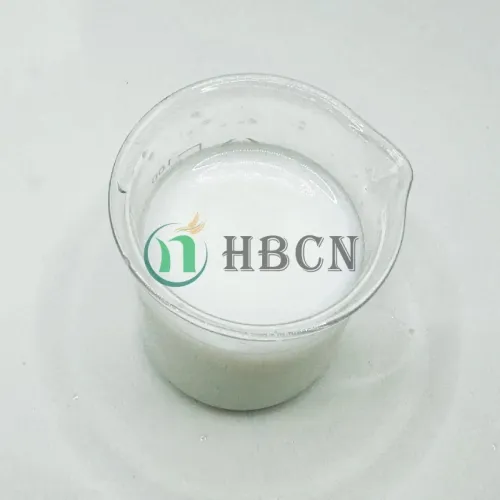
Dic . 31, 2024 15:48 Back to list
Chlorpyrifos EU Regulations and Impact on Agricultural Products and Safety
The Impact of Chlorpyrifos Regulation in the EU A Focus on Products and Safety
Chlorpyrifos, an organophosphate pesticide, has been widely used in agriculture for decades to control a broad spectrum of pests. However, growing concerns over its potential health risks, particularly for children and farmworkers, have led to significant regulatory changes in the European Union (EU). This article explores the implications of these regulations on chlorpyrifos-containing products and the broader impact on health, the environment, and the agricultural sector.
Understanding Chlorpyrifos and Its Uses
Chlorpyrifos is primarily employed in the cultivation of fruits, vegetables, and grains. Its effectiveness in pest control has made it a popular choice among farmers. However, research has raised alarms about its neurotoxic effects, particularly in vulnerable populations like children. Exposure to chlorpyrifos has been linked to developmental issues, cognitive impairments, and other health concerns. As a result, various organizations, including the World Health Organization (WHO) and the European Food Safety Authority (EFSA), have called for stricter regulations on its use.
Regulatory Developments in the EU
In light of these health concerns, the European Union has taken strong actions to regulate chlorpyrifos. In early 2020, the EU officially banned the use of chlorpyrifos in member states, leading to the removal of products containing this pesticide from the market. This decision was widely supported by public health advocates and environmentalists, who argue that the potential risks outweigh the benefits.
The ban has prompted a significant shift in the agricultural sector. Farmers have had to adapt to the new regulations by seeking alternatives for pest management. This situation has catalyzed the development of integrated pest management strategies and the exploration of organic farming practices, thereby promoting sustainable agriculture.
Economic and Environmental Implications
chlorpyrifos eu products

The ban on chlorpyrifos presents both challenges and opportunities for the agricultural sector in the EU. While farmers may face initial setbacks in productivity as they transition to alternative pest control methods, the long-term benefits could outweigh these challenges. The increased emphasis on sustainable practices can lead to healthier ecosystems, which in turn contribute to food security.
Moreover, the regulation of chlorpyrifos can enhance consumer confidence in EU agricultural products. As consumers become more aware of food safety and environmental issues, the demand for pesticide-free and organically produced foods is likely to rise. Farmers who adapt to these market trends can benefit from premium pricing for their products.
Health and Safety Considerations
One of the primary motivations behind the ban on chlorpyrifos is the protection of public health. With the removal of chlorpyrifos products from the market, the likelihood of accidental exposure, particularly among vulnerable populations, is significantly reduced. This regulatory action underscores the EU's commitment to safeguarding the health of its citizens, particularly children who are more susceptible to the harmful effects of pesticides.
In addition to human health, the ban addresses environmental concerns. Chlorpyrifos has been shown to have detrimental effects on aquatic ecosystems and biodiversity. By eliminating its use, the EU aims to improve water quality and support the preservation of species that are vital for ecosystem balance.
Looking Ahead Future of Pest Management in the EU
The phase-out of chlorpyrifos marks a critical turning point for agricultural practices in the EU. As farmers and stakeholders adapt, there is an increasing push toward innovation in pest control. Research and development in biopesticides, insect-resistant crops, and precision agriculture technologies are expected to flourish, offering safer and more effective alternatives for pest management.
In conclusion, the regulatory changes surrounding chlorpyrifos in the EU have far-reaching implications for agricultural practices, public health, and environmental sustainability. As the agricultural sector evolves in response to these regulations, the focus on safety and sustainability will be paramount. This transition not only aims to protect human health but also seeks to ensure the long-term viability of agriculture in the face of environmental challenges. Moving forward, the EU serves as a model for how sound policy decisions can lead to positive change in farming practices globally.
-
Willowood Imidacloprid: Best Broad-Spectrum Insecticide Solution
NewsAug.22,2025
-
Atrazine Herbicide: Selective & Effective Weed Control for Sale
NewsAug.21,2025
-
Azoxystrobin: Broad-Spectrum Fungicide Solutions
NewsAug.11,2025
-
Best EPA Boscalid: Superior Crop Fungicide for Max Yields
NewsAug.11,2025
-
Best Willowood Imidacloprid: Superior Pest Control Solutions
NewsAug.10,2025
-
Best EPA Boscalid Fungicide: Ultimate Crop Protection
NewsAug.09,2025
